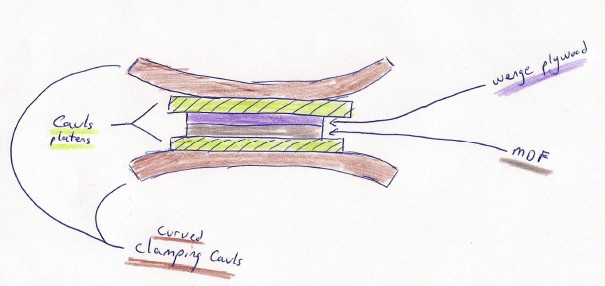Gluing Wood Flooring to Concrete
Adhesive choices for glue-down wood strip flooring. July 12, 2008
Question
I have been asked by a client to install wood floors in a few antique passenger train cars. The existing floor is a concrete slab. The train cars will be in use June through October every year. So far I think floating an engineered hardwood floor, over a Floor Muffler type underlayment. As far as glue for the tongue and groove, should I use polyvinyl acetate, or aliphatic resin? Would using a PVA be better because of the excessive vibrations?
Forum Responses
(Architectural Woodworking Forum)
From Professor Gene Wengert, Sawing and Drying Forum technical advisor:
Why would you want to glue the t&g flooring? If you do glue, avoid poly-vinyl acetate (PVA) even if it is an aliphatic resin type. You need something that is more flexible and will resist heat and moisture (I suspect). I would consider PL-400. For underlayment, will it be getting damp or wet? The traditional product for freight cars was white oak. Why not consider flooring similar to what is used in 18-wheelers today?
From contributor G:
How authentic do you want to be? Twenty or more years ago when the BC rail cars changed over to nailable metal floors and discarded the old flooring in our local dump, I brought lots of them home for garden boxes. They were maple, if I recall correctly, and made of strips bolted through and through with huge bolts. No glue involved.
From contributor D:
Wood flooring can be full trowel glued with products made specifically for that purpose. For commercial use I recommend SLC 3000 by Rinaldi, Italian glue that is elastomeric so wood can expand and contract seasonally without delamination. 3M Tartan brand strap tape can be used to hold planks together while glue cures. The green tack of the SLC adhesive is strong enough that no weighting or down pressure is required.
From the original questioner:
Thanks for all the advice. I am now going to go the solid white oak route instead of engineered hardwood. More authentic and a much better look. It was my first thought, but I just didn't think it would work. Since the slab is totally dry with no chance of moisture, I plan to glue straight to the surface after priming. SLC Silovil L38 looks perfect. A comparable adhesive I found was SikaBond T55. It is recommended to use in conjunction with Sika Primer. They also have an interesting Sika AcouBond-System that uses a slotted foam mat as acoustical dampening. The slots get filled with glue so the wood floor is directly glued to the slab. Looks too good to be true. Has anyone used this product?
From contributor D:
Sika makes a good product and they have been around for a while. The cleanup is much more difficult than SLC and the Sika also has a strong solvent smell, unlike SLC, which has a mild urea odor. Sika is single component and has a wide range of cure time r/t environmental conditions. SLC is a 2 component and cures much more reliably. Both are excellent products.
The comments below were added after this Forum discussion was archived as a Knowledge Base article (add your comment).
Comment from contributor J:
I have used the Sikabond system. It is excellent for gluing flooring to concrete. The slotted system is used with engineered flooring. Just understand that solid flooring will expand and shrink more than nailed down systems. You will have better results with shorter boards in length, no longer than 3' and widths no wider than 3 1/4". You may also have to clamp the flooring with straps to pull boards tight together.
